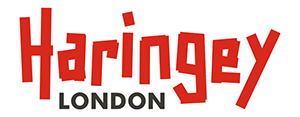As we move to the public beta phase of our new website development – this post explains the journey we’ve been on so far.
Getting the basics right
Part of the Haringey Deal is ‘to change the way we work – listen better, share power, draw on (residents) passion and expertise… and get the basics right’. To help make residents’ everyday interactions with the council as easy, effective, and supportive as possible we’ve started a programme of work around improving resident experience.
This includes a redesign of our website – haringey.gov.uk.
We’ve already done a lot – but still have a long way to go. As we move from Alpha to Beta, we thought we’d share some background to the project, some of the work already carried out, and some of what we have learned thus far.
A trip down memory lane
10 years ago we moved from our old Livelink Content Management System to Drupal – a free to use, open source platform which includes a wide range of tools to help organisations build and manage websites. At the time we moved our public website, a few microsites and our intranet to Drupal (we basically made a copy of our external site and used it as the backbone of our staff intranet). There was some nervousness at the time about using open-source technologies (how can anything that is free be any good?) but over the years Drupal has proven to be a reliable, secure, powerful and flexible platform to build on.
When we heard the version of Drupal we were using (Drupal 7) was coming to end of life we did a mini-options appraisal and decided on the upgrade to Drupal 9 (D9) as our next logical step. A key factor in that decision being the success of the LocalGov Drupal distribution (LGD).
This is a great collaborative project built around Government Design System’s (GDS) best practice principles of usability and accessibility – which, as a signatory to the Local Digital Declaration neatly aligned with our digital strategy in Haringey. We also had a lot of in-house experience of working with Drupal.
Try before you buy
Although we’d heard nothing but good things about LocalGov Drupal, being a sceptical bunch, we thought it wise to test it ourselves before taking the plunge. So, we used this to build our Bruce Castle Museum microsite first – using the subsites element of LGD – to see if this gave us what we wanted.
The team’s familiarity with Drupal 7 made it relatively straightforward to get to grips with the new system, and the service seemed very happy with what we delivered. So, the decision was made to move our main site to LGD too, and we went to Digital Marketplace to get a partner agency in to help us build it.
But enough of the tech – what about the content?
Too many cooks
Like most sites, our website had grown and grown over the years – despite the best efforts of the central content team. Our devolved content model helped ensure that services maintained an interest in adding and updating content. The downside was that things were rarely properly reviewed and removed once they’d reached their sell-by date.
There were also way too many PDFs – over 8,000 of them! – which we know to be inaccessible and hard to read on mobile (nearly 60% of our users now use a mobile to visit the site).
Building for residents
We could also see that many pages were very much written from a service perspective – projecting what they want the user to know rather than what the user was really looking for. Putting our residents needs at the centre of our plans meant a change in emphasis – something we had strong senior backing for given this is a core component of the Haringey Deal.
So, this was our opportunity to do more than simply move to a new CMS. It was time to get rid of the old, unwanted and unloved content, and do some major re-organising and re-decorating.
Keeping up with the Joneses
Our satisfaction stats had been steadily dropping over the last few years too. A lot of this related not to the website itself, but to our processes and the third-party online systems the website passed residents to. However, the site itself was also showing its age – the last significant design work was over 6 years ago – and customer expectations had moved on. People expect the same level of seamless, professional, mobile-friendly user experience they get from other modern websites.
We need to catch up.
Time to declutter
We began with a full content audit to better understand the scale of the problem. We did this with the help of:
- analytics
- SiteImprove auditing tools including automated accessibility and readability scores
- the teams’ own knowledge of how often services properly review their content
We came up with a “content crapometer”TM to help us quickly see which sections were in decent health, which needed major surgery, and which needed to be (humanely) put down.
It also helped us decide which areas to work on first in Alpha.
Next time
We’ll bring you up to date with progress on the project, from:
- the challenges of bringing content design to a large organisation
- Alpha research activities
- some of the things we wish we’d known before we moved in
We’ll also be seeing how far we can stretch these awful housing analogies.
Future posts will be looking at the work taking place in the Digital Customer programme to improve the end-to-end resident experience.
